A few weeks back my esteemed Muddy Colors colleague Greg Manchess (secret Ninja painter extraordinaire) posted an installment in his always-useful “10 Things…” series, this one devoted to “Clever Colloquialisms.” And like his previous essays it was full of personal insights and no-nonsense talk about art and being an artist that I largely agree with.
Well…except for one part.
Under the subheading of “You Either Have It or You Don’t” Greg reiterates his long-held and often-expressed feelings about the term “talent,” describing the concept—and the observation of “you either have it…”—as “the all-time winner of ignorant sayings.” And, you know what? It’s hardly a surprise that he makes some worthwhile observations, including “Artists are built, not born.” True, true, true. But (and you knew a “but” was coming) when it comes to being able to tell who has “it” and who—(unfortunately) might not?
Oh, you most certainly, most absolutely, can.
Now whenever Greg has made statements like “talent is a myth” or “no one is ‘gifted'” there have always been those who stamped their feet and insisted that either they—or someone they know—could draw like Michelangelo while still in the womb and never had to work at it. Never ever ever. Of course, if you bothered to look at their (or their friend’s) art you usually discovered that J. Fred Muggs was a better painter and that either these people were delusional, had no objective or discernible taste, or, if they were any good, weren’t truthful about how much practicing and studying had actually taken place. (Psst, if you draw all the time, that’s practicing.) Frazetta always used to claim that he never practiced or studied or used reference and “just did it,” but as I’ve mentioned in the past, Frank could be something of a fibber, bless him.
Randolph, Mortimer, Louie, and Billy Ray
have a bet about “nature vs nurture” in Trading Places.
The Nature Vs Nurture argument is as old as the hills and many books of scientific and psychological study supporting both sides have been and continue to be published with no end—and no undebatable conclusions—in sight. As science makes progress in mapping the brain and psychologists advance techniques for deciphering the quirks of human behavior, other questions, other unknowables, pop up as a result and raise the metaphoric drawbridge between “hypothesis” (or “theorem”) and “accepted theory.” Meaning, of course, that regardless of progress we’re still a long way from having irrefutable explanations as to how and why artists become artists of any sort much less great ones. Not that it’s magic, just that it’s…complicated.
With the combination of experiments, evidence, and peer reviews, a scientific theory is as objective as any other fact can be (not counting today’s “alternative facts,” that is)—even though there is always the possibility for it to be proven wrong in the future. The constant evolution and understanding of science may mean that no theory can be 100% proven to be an unequivocal absolute forever and ever. Science cannot be science without thorough (and often ongoing) review and the acceptance of many other scientists and expert researchers. Art, on the other hand, can still be art without the say-so or approval of any other artists or critics. The concept of art (and what qualifies as art) are basically personal perspectives, and therefore…art is subjective.
And as Greg says in his post, “‘Talent’ is a great word, a catch-all term to express how an artist has achieved a certain amount of skill. It’s hard to explain how it works, so society has created a word that identifies the struggle, the work, and the attention, in one easy-to-sling-around expression.”
Well…yeah.
So it’s the casual use and the occasional supernatural mumbo-jumbo—the tacit denial of the hard work it takes to achieve—that others have applied to “talent” that he takes issue with. And he’s right. No question. Talent for an artist is like the old fable of “Stone Soup”: it’s a stew that starts as nothing, combines many different ingredients, and as a result is transformed into something memorable and fulfilling. All of those crucial ingredients—some readily identifiable, others almost bordering on evanescent—are part of the stew that makes an artist.
Actress Clara Bow came to be known as The It Girl and exemplified the spirit of the 1920s in America. “She certainly has that certain ‘It’…and she just runs away with the film.”—Variety
But “it”? I might be wrong (and I’m sure he’ll tell me if I am), but I think Greg has projected his dislike for all the mystical hoodoo others have applied to “talent” onto “having ‘it'”—and my view is that projection is a mistake. Saying an artist “has it” (or that “they don’t”) is simply a shorthanded recognition of all of the imperative qualities—the ingredients—necessary to be an accomplished, successful artist and which are evidenced (or missing) in the work itself.
Technical skill alone is never enough: how many perfectly-rendered works have we all seen that were cold, unengaging, unispired, and devoid of content, works that were forgotten almost immediately after viewing? Plenty. There are thousands upon thousands of people who know how to lay down paint or pixels very nicely and their numbers swell each year. But there are and will always be those who stand out from the crowd, those who create artworks that a multitude respond to, those who get the plum jobs, and those who receive awards and accolades for what they create. How? Why? Yep: it’s because they’ve got “it.” And “it” and I think the true meaning of what it is to be “talented” are virtually the same. Skill, intellect, empathy, drama, clarity, observation, intuition, curiosity, communication, timing, focus, personal motivation, originality, courage, perseverance, and, sure, a fair bit of luck—in other words, lots of personal investment combined with the nuts and bolts taught in a school or workshop or through independent study—all go through the blender to make up what “it” is. Careers consist of high points and low—and it’s how an artist deals with and learns from both, from their triumphs and failures, that ultimately contributes to their overall achievements. Like talent, having others recognize that you “have it” isn’t saying that your abilities were magically obtained or a preordained gift that came down from the heavens, but rather an acknowledgment of visual, intellectual, and emotional skills that allows the artist to connect with people, enviable skills that can only be obtained through years of hard knocks and hard work. It’s a show of respect for accomplishment, a sign that “I’d like to work with you/buy your art/learn from you.”
I think it’s a tad pessimistic to say that the only reason 98% of hopeful artists don’t make it is because they simply give up. “Push through! Make it work! The world’s your oyster!” are all very nice but ignore the simple realities of life (and the marketplace): not everybody gets what they want. Lots of runners enter a race, but only one can cross the finish line first (or second or third). Success merely through desire and perseverance, though both are important, rarely happens: being a successful, working professional artist or a writer or a musician or actor, athlete, dancer, or any other type of creative is, let’s face it, pretty goddam difficult.
No matter how much they practice, no matter how much they want it, no matter how much they’re encouraged by parents, teachers, coaches, mentors, and friends, not every kid who loves and plays basketball nonstop will grow up to be the next LeBron James. Not every devoted actor who studies and workshops their asses off will eventually get that big break and become the next Jennifer Lawrence. Not every inspired student who picks up a brush will one day paint something that resonates over the decades with audiences like “Death Dealer” and sell the original for a million smackers. Which doesn’t mean you can’t play basketball or act or paint: of course you can and should and screw anybody who says otherwise. But what I am saying is that without all of the ingredients that make up the “it stew” the odds of standing out (and not having to struggle daily to make a living) are extremely slim.
Wyeth had it. Frazetta had it. Meltzoff had it. Kinuko and Donato and Kunz and dos Santos and Sheppard and Android and Ortiz and Brom and, yep, Manchess and on and on and on all have it. You can identify “it” in artists starting out and perceive their potential just as readily as you can see “it” in seasoned pros. “It” isn’t easy to obtain (remember the hard work caveat) but it can be easily lost (through hubris, egotism, or laziness): remember, empathy and the ability to connect with others is a big part of what makes and keeps a successful artist…successful.
And being able to recognize who has it and who doesn’t requires the exact same multitude of skill sets as it does to have “it”—which is why there are exceptional publishers and art directors and curators and entrepreneurs (and collectors, too) who readily stand out from the pack and whose intuition, taste, and perceptions help build bridges between artists, art, and audiences. They help grow our aesthetic appreciation. Art Paul had it; Fred Woodward has it. Chip Kidd has it. Paula Scher has it. Lauren Panepinto and and Mark Chiarello and Irene Gallo and Dawn Murin all have it. And we’re all—creators and audiences alike—much better because they do.
So, yes, Virginia, it’s neither supernatural nor unobtainable, but there most certainly is an “it.”
And you either have it. Or you don’t.
Students at IMC this June should ask Greg to teach them this technique. (Cartoon by David Borchart)



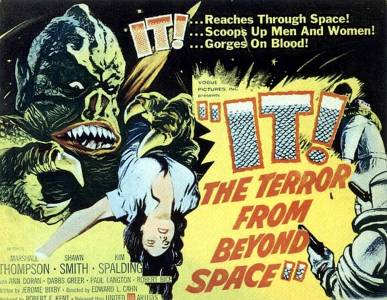



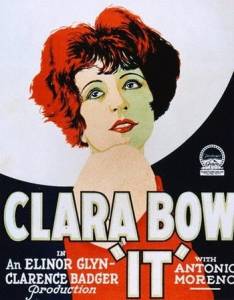

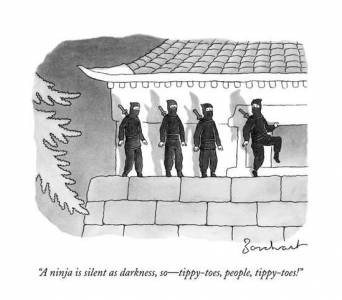
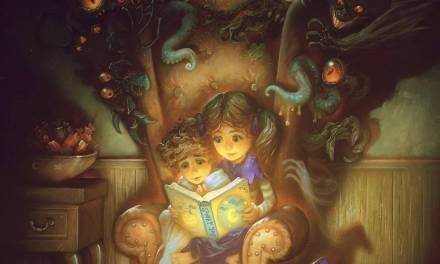

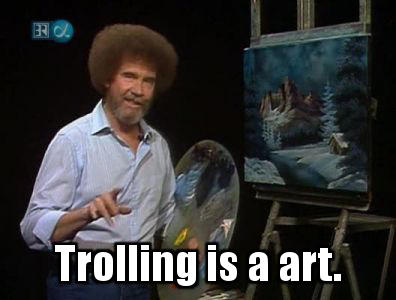
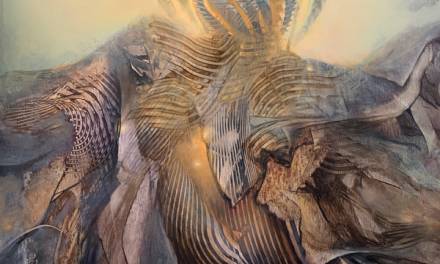
“It” a.k.a. charisma
“But “it”? I might be wrong (and I’m sure he’ll tell me if I am), but I think Greg has projected his dislike for all the mystical hoodoo others have applied to “talent” onto “having ‘it’”—and my view is that projection is a mistake. Saying an artist “has it” (or that “they don’t”) is simply a shorthanded recognition of all of the imperative qualities—the ingredients—necessary to be an accomplished, successful artist and which are evidenced (or missing) in the work itself.”
^This
A good caveat to the ‘talent is a myth’ speech that most of us (on the illustration side, anyway) agree with. Ultimately, a number of aspects of applied intelligence (and there are many) are going to be needed, or hard work just becomes sisyphean. And Greg certainly accounts for that. I’ve heard him say any number of times that it’s mindful work that will accomplish something, not just repetition for its own sake. That applies to life and building a career or business, developing a style or signature subject matter, and other relevant needs for success. The caveat to the caveat is that multifarious forms of intelligence can also be exercised. Will we all be the next artist celebrated through the ages? No. But we can certainly try, and should not assume the results of that effort are preordained by some quality that was foreseeable from childhood on.
Absolutely, Bruce. The willingness to try is a big part of what makes us artists.
As I’ve said to Greg in the past, I think it’s too easy to get wrapped up in semantics and get distracted when talking about “talent” or “it.” People who don’t draw or paint generally don’t understand what it takes to do what artists do and will always gravitate to easy summations (“You’re so talented!”) to extend a compliment—and that’s never going to change. Trying to “educate” them about all of the focus and thought and skill that goes into the creative process misses the point that they were trying to be complimentary and tends to come off as a lot of blah blah blah. As Michelangelo said, “If people knew how hard I worked to get my mastery, it wouldn’t seem so wonderful at all.”
Thanks for posting!
Hello Arnie,
Having heard Greg quite a few times, I must say I’m inclined to back him on the “Having it” debate. The one thing that I find which is kept out of the whole debate is the simple fact that someone has a fondness for what he’s doing. It’s not willingness, and certainly it isn’t hard work, but just the joy of doing (or looking at) that thing you love.
And that is the only thing I would be willing to call talent: the fact that this or that child really enjoys doing just that activity (eg. art). And to be honest talent seems the bad word for it.
I’m sure you’ll agree it’s the most fundamental stepping stone as it will help persist in those difficult moments when you’re doing all the hard work to get further on. Other than that natural joy of looking at and being awed by what you are naturally inclined to do, I don’t think there is any talent. I believe that is exactly what Greg means. At least it is what I believe Greg is telling us.
Great article though and lovely to see everyone’s perception on “it!”.
Well, as I said I believe Greg’s stances on “talent” and “having it” are a matter of semantics—and he and I have had spirited conversations our differences of opinion regarding same over the years. Just as I don’t believe that technical skill alone, whether achieved through deep practice or years of mentored guidance, is enough to make an artist…a good artist. There’s no carved-in-stone formula and what works for one doesn’t work for others. If that were so there would be 500 Manchess’ out there painting away instead of one.
Enjoying what you’re doing is, of course, great…but I don’t think it’s enough all on its own to be able to create compelling art or to make for a sustainable career. If all someone wants is to enjoy drawing or painting or sculpting just for themselves, that is absolutely great. But if they want to stand out with a career in illustration or as a gallery artist, they’ll need to start adding ingredients to their art stew.
Thanks for posting!
Dang! Meant to say “spirited conversations over our differences of opinion”
good luck